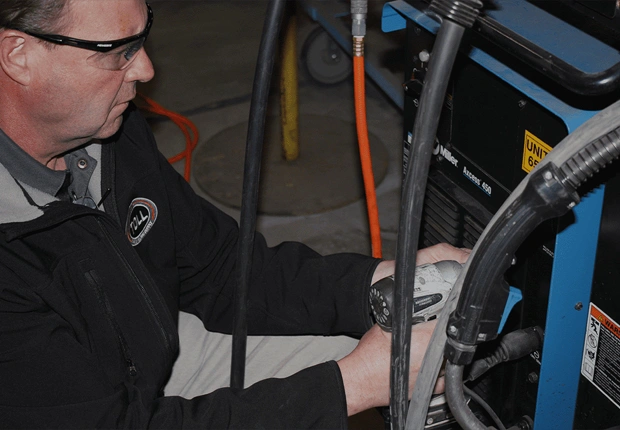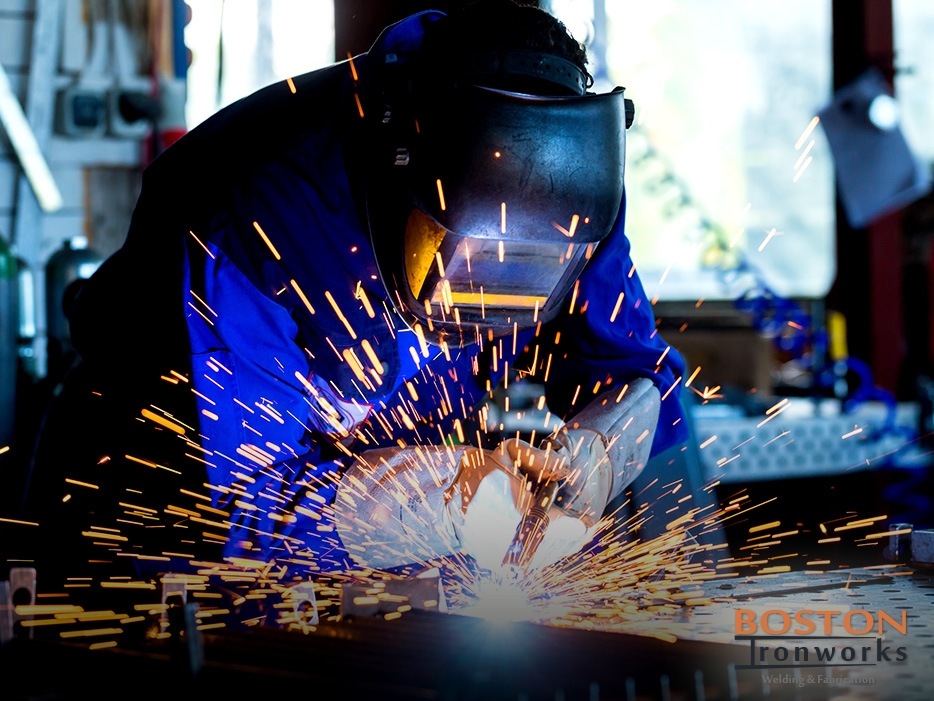Everything about Welding: Trick Insights Into Techniques and Finest Practices for Success
Welding incorporates a range of strategies, each matched for certain products and applications. Understanding these approaches, such as GMAW, SMAW, and TIG, is necessary for accomplishing excellent outcomes. The right devices and security practices can not be neglected. As prep work and troubleshooting play crucial roles in the welding procedure, understanding these elements can substantially enhance the top quality of the end product. What are the crucial variables that guarantee a successful weld?
Understanding Different Welding Techniques
Welding methods incorporate a variety of techniques, each matched to specific applications and materials. Among one of the most usual strategies are Gas Steel Arc Welding (GMAW), Protected Steel Arc Welding (SMAW), and Tungsten Inert Gas Welding (TIG) GMAW, additionally recognized as MIG welding, is preferred for its speed and adaptability, making it optimal for slim products. SMAW, or stick welding, is preferred for its simplicity and performance in outside settings, specifically with thicker steels. TIG welding supplies accuracy and control, making it suitable for elaborate job and non-ferrous metals (Montana Mobile Welding and Repair Welding). Each strategy has its special advantages and considerations, allowing welders to choose the most effective technique based on the task's needs, material kind, and preferred outcomes. Recognizing these strategies is vital for effective welding
Crucial Welding Tools and Devices
While different welding strategies call for certain skills, the ideal equipment and devices are just as essential for achieving top quality outcomes. Necessary welding devices consists of welding machines, which vary depending upon the technique-- such as MIG, TIG, or stick welding. Safety equipment, including gloves, helmets, and aprons, guarantees safety and security and comfort throughout the process. Furthermore, fixtures and clamps help protect products in position, ensuring accuracy in welds. Consumables like welding poles, cable, and shielding gas are additionally essential components that affect the quality of the weld. Devices such as grinders and cutters promote surface preparation and post-weld completing, adding to a specialist result. Purchasing top quality devices ultimately enhances the efficiency and performance of welding jobs.
Safety And Security Practices in Welding
Correct safety and security methods are essential in the welding sector to protect employees from potential risks. Welders have to put on proper personal protective equipment (PPE), including safety helmets with appropriate shading, gloves, and flame-resistant apparel. Ample air flow is vital to lower direct exposure to harmful fumes and gases generated during the welding process. Additionally, workers ought to be learnt the correct handling of welding equipment to avoid mishaps. Fire safety measures, such as maintaining flammable materials away from the welding area and having fire extinguishers conveniently available, are needed. Normal assessments of tools and work areas can help recognize prospective threats before they lead to mishaps. By adhering to these safety techniques, welders can create a more secure working atmosphere and decrease risks linked with their profession.
Preparing Products for Welding
Preparing materials for welding is a crucial action that significantly affects the top quality and honesty of the end product (Montana Mobile Welding and Repair Fabrication). Proper prep work entails cleaning the surface areas to eliminate pollutants such as dust, rust, and oil, which can endanger the weld. Strategies such as grinding, fining sand, or using solvents are frequently employed to accomplish a clean surface. Additionally, guaranteeing that the products mesh well is important; voids can result in weak welds. It's also vital to take into consideration the positioning and positioning of the elements, as this will impact the convenience of welding and the last result. Selecting the suitable filler product and making certain compatibility with the base steels is crucial for attaining strong, resilient welds.
Tips for Achieving High-Quality Welds
Accomplishing high-grade welds needs focus to detail and adherence to best practices throughout the welding procedure. Appropriate joint prep work is necessary, guaranteeing surfaces are complimentary and tidy from pollutants. Selecting the ideal filler product and welding method based upon the base metals is important for optimal bonding. Keeping consistent traveling rate and angle while welding can protect against problems and promote uniformity. Furthermore, regulating warm input is crucial; too much warm can result in bending and weakened joints. Regularly evaluating the welds during the procedure permits for immediate modifications if needed. Finally, using proper post-weld treatments, such as cleansing and stress and anxiety relief, can boost the toughness and stability of the weld, eventually making certain a successful outcome.
Troubleshooting Typical Welding Issues
Welding commonly provides difficulties that can influence the top quality and stability of the last item. Usual concerns such as porosity, inconsistent weld beads, and getting too hot can develop, each needing details fixing techniques. Comprehending these troubles is necessary for welders to improve their abilities and achieve ideal results.
Porosity Issues Discussed
Although porosity can commonly be overlooked, it remains a crucial concern in welding that can endanger the stability of a finished item. Porosity refers to the visibility of small gas pockets within the weld bead, which can weaken the joint and lead to early failing. This problem normally develops from pollutants, dampness, or inappropriate securing gas coverage during the welding process. To alleviate porosity, welders need to verify that the base materials are completely dry and tidy, use ideal protecting gases, and maintain consistent welding parameters. Consistently evaluating the tools and atmosphere can also assist identify prospective concerns prior to they manifest in the weld. Dealing with porosity effectively is important for achieving solid, long lasting welds that satisfy quality criteria.

Inconsistent Weld Beads
Inconsistent weld beads can significantly impact the quality and strength of a finished item. Different aspects contribute to this issue, consisting of incorrect travel rate, inaccurate amperage setups, and inconsistent electrode angles. When the welder moves also quickly, a bead may appear narrow and do not have penetration, while relocating also gradually can create extreme accumulation. Furthermore, using the incorrect amperage can cause either undercutting or extreme spatter, both of which concession weld honesty. The welder's method, such as inconsistent torch activity, can additionally bring about irregular grain appearance. To reduce these issues, welders need to concentrate on maintaining stable, controlled movements and making certain proper devices setups to attain harmony in their welds. Uniformity is key to attaining reliable and solid welds.
Overheating and Bending Issues
Too much warm throughout the welding process can lead to substantial overheating and warping concerns, influencing the architectural honesty of the workpiece. These troubles often show up as distortion, which can compromise alignment and fit-up, making additional setting up challenging. Aspects contributing to overheating consist of the selection of welding specifications, such as voltage and travel speed, as well as the type of material being bonded. To reduce these problems, welders should preserve constant travel rate and appropriate heat input while monitoring the workpiece temperature. Furthermore, preheating or post-weld warm therapy can aid minimize anxieties created by rapid air conditioning - Belgrade Fabrication. Normal inspection and adherence to finest techniques are necessary in avoiding getting too hot and guaranteeing the long life and reliability of welded structures
Regularly Asked Inquiries
What Are the Profession Opportunities in the Welding Sector?
The welding sector offers varied occupation chances, consisting of positions as welders, designers, teachers, and inspectors. Experts can operate check here in production, construction, aerospace, and automotive fields, profiting from strong demand and competitive salaries in numerous functions.
Just How Can I Enhance My Welding Speed Without Sacrificing Quality?
To improve welding speed without sacrificing quality, one should practice effective strategies, preserve tools, enhance setups, and enhance hand-eye control. Normal training and looking for comments can additionally greatly add to achieving much faster, top notch welds.
What Certifications Are Readily Available for Welders?
Numerous certifications exist for welders, consisting of those from the American Welding Society (AWS), the National Center for Building And Construction Education And Learning and Study (NCCER), and various industry-specific organizations. These credentials boost employability and show skill effectiveness.
Exactly How Does Welding Affect the Features of Metals?
Welding influences the properties of steels by changing their microstructure, which can lead to adjustments in ductility, toughness, and solidity. Warmth input and cooling rates throughout the procedure greatly affect these material characteristics.
Can I Bonded Dissimilar Metals Together?
